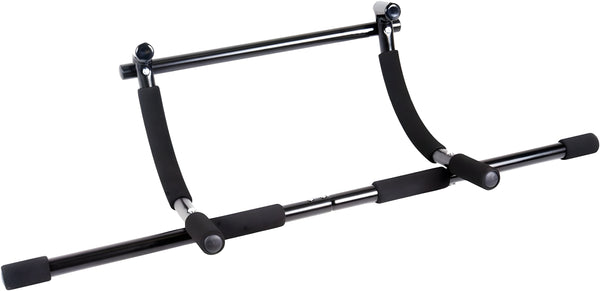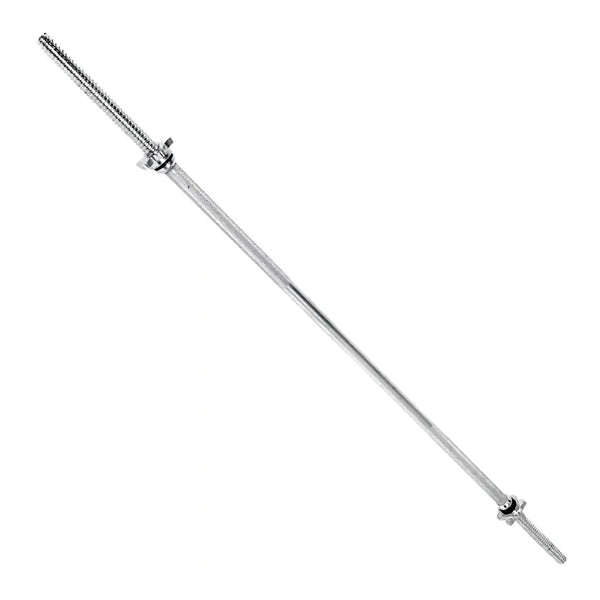Your Cart is Empty
September 25, 2023 3 min read
Everyone wants big, strong biceps. If you’re looking to build up your biceps, you may be wondering what type of training will give you the best results. One type of training that is becoming increasingly popular is cable training, which uses cables attached to a machine or weight stack to provide resistance. Cable training can be used to strengthen and build muscle in the biceps, as well as other parts of the body.
Shop The Collection: Pull Up BarsCable training works by attaching a cable to a weight stack or machine, usually either low or high. The cable is then pulled, providing resistance against the weight stack or machine. This resistance is designed to replicate the effects of lifting weights, and is especially effective for targeting specific muscles, such as the biceps. The resistance provided by the cable helps to build strength and size in the biceps.
 Shop The Gear: CAP Barbell Xtreme Doorway Pull Up Bar, $27.99 USD
Shop The Gear: CAP Barbell Xtreme Doorway Pull Up Bar, $27.99 USD
When using the cable machine, you can adjust the weight and the resistance provided by the cable. This means that you can tailor the workout to your goals and abilities. For example, if you want to focus on building stamina and endurance, you can lower the weight and increase the resistance. If you’re looking to build bigger muscles, you can increase the weight and reduce the resistance.
Shop The Collection: BarbellsCable training provides a number of benefits when it comes to bicep development. Here are some of the key benefits:
 Shop The Gear: CAP Barbell Standard Threaded Barbell, 6-ft, $45.99 USD
Shop The Gear: CAP Barbell Standard Threaded Barbell, 6-ft, $45.99 USD
1. Increased Strength: Cable training has been shown to help increase strength in the biceps. This increased strength can help you lift heavier weights, which can help you build more muscle mass in the biceps.
2. Improved Range of Motion: Cable training also helps to improve range of motion in the biceps. This improved range of motion can allow you to perform exercises with better form, which in turn can lead to greater gains in muscle size and strength.
3. Targeted Muscle Groups: With cable training, you can focus on specific muscle groups. This allows you to target the biceps more effectively, which can help you maximize your results.
4. Versatility: Cable training can be used to target a variety of muscle groups, including the biceps. This makes it a great all-around exercise choice.
There are a number of different cable exercises that can be used to target the biceps. Here are some of the most popular cable exercises for bicep development:
1. Standing Bicep Curl: The standing bicep curl is one of the most effective cable exercises for bicep development. It involves standing upright and holding the cable attachment with both hands. You then curl the cable attachment up towards your chest, and then slowly lower it back down. This exercise can be done with one arm at a time, or with both arms simultaneously.
2. Seated Bicep Curl: The seated bicep curl is similar to the standing bicep curl, but it is performed while seated. To perform this exercise, sit on a bench or chair and hold the cable attachment with both hands. Curl the cable attachment up towards your chest, and then slowly lower it back down.
3. Alternating Bicep Curls: Alternating bicep curls involve alternating between curling the cable attachment with one arm and then the other. This exercise can be done while standing or sitting, and helps to target both arms evenly.
4. Hammer Curls: Hammer curls are an excellent exercise for targeting the biceps. They involve holding the cable attachment with both hands, and then curling the cable attachment up towards your chest. Make sure to keep your elbows close to your sides throughout the exercise.
Cable training is an effective and convenient way to target the biceps. It can help you build strength, size, and range of motion in the biceps. There are a number of different cable exercises that can be used to target the biceps, such as the standing bicep curl, the seated bicep curl, the alternating bicep curl, and the hammer curl. Cable training can be a great addition to any biceps workout routine.
Shipping Protection gives you peace of mind while saving you time and money.
Shipping Protection provides coverage for eligible orders that are lost or damaged in transit, or stolen after delivery has been confirmed by the carrier. MAGMA Fitness, through its partners, administers the protection program and may receive compensation for these services. Coverage is subject to the terms, conditions, and exclusions outlined in our Shipping Protection Terms & Conditions.